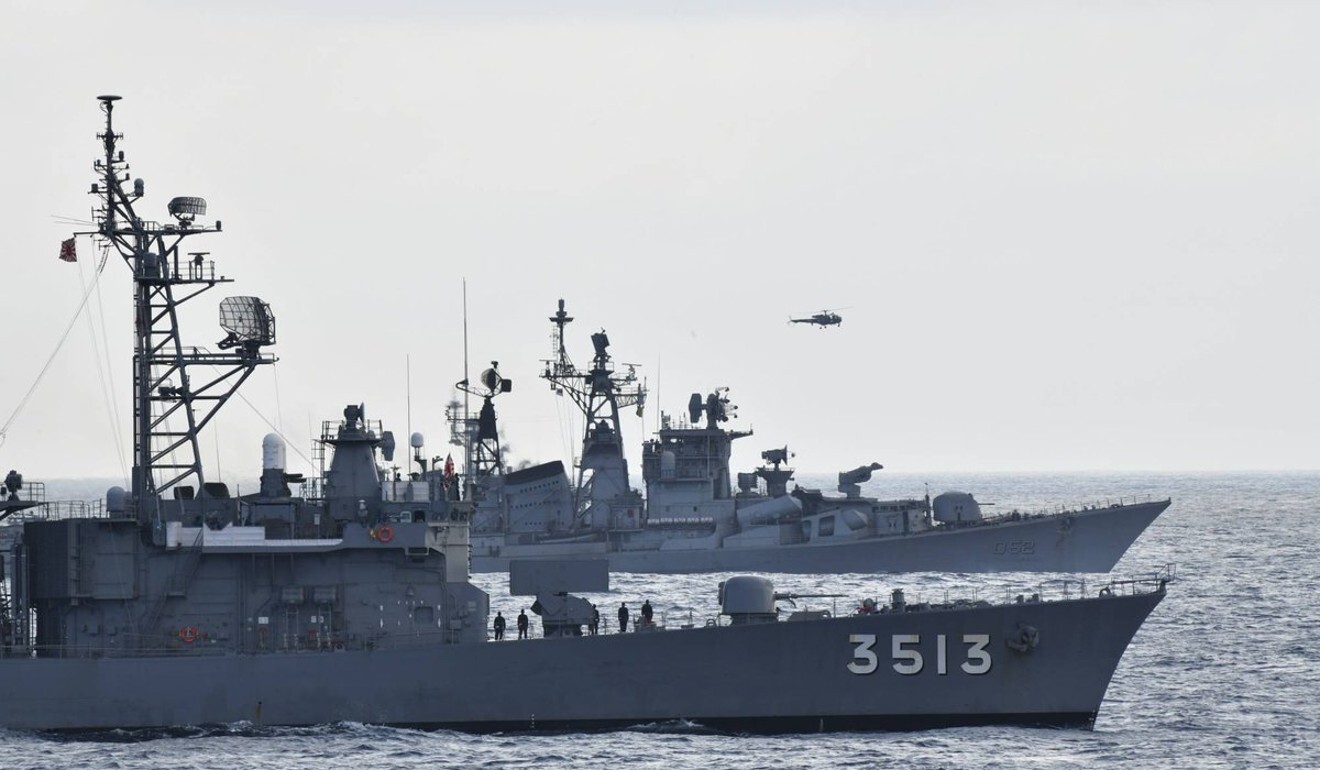
India-Japan naval exercises: a message for China?
- Moves come after 20 Indian soldiers were killed fighting Chinese troops in the Himalayas and amid Beijing’s dispute with Tokyo over the Diaoyu Islands
- China’s assertiveness in the South and East China Seas has acted as a spur to bring together India and Japan, analysts say
Joint exercises by the Indian and Japanese navies in the Indian Ocean at the weekend suggest the two countries are drawing closer to face what they perceive as a common threat from China, analysts say.
While joint military exercises involving the two countries are not uncommon, the latest activity comes amid tensions both are experiencing with Beijing.
Can India afford an economic battle with China?
New Delhi and Beijing have blamed the deaths in the Himalayas on each other. The Chinese Ambassador to India Sun Weidong said Indian troops were responsible for the clash because they had “crossed the Line of Actual Control” which acts as the de facto border. In response, the Indian Ambassador to China Vikram Misri warned of “ripples and repercussions” in diplomatic ties because China was “trying to alter the status quo on the ground by force”.
Meanwhile Tokyo and Beijing have traded barbs over the islands. The Chinese Foreign Ministry has called Japan’s move a “serious provocation on China’s territorial sovereignty”, while Japanese Defence Minister Taro Kano responded that Tokyo would be monitoring Beijing’s “intentions, not only its capability”.

HEATING UP
The exercise is the latest indication that geopolitical rivalries are heating up in the Indian and Pacific Oceans.

‘A CONFLUENCE OF TWO SEAS’
China’s assertiveness in the South and East China Seas has acted as a spur to bring together India and Japan, analysts say.
Since then, the two countries have deepened their military cooperation, taking part in joint events such as the ‘Dharma Guardian’ land exercises, the ‘Shinyu Maitr’ aerial exercises and the trilateral military exercise ‘Malabar’ with the US.
China names undersea features amid rising territorial tension with Japan
Analysts like C Uday Bhaskar, a retired commodore in the Indian Navy who is now the director of the New Delhi think tank Society for Policy Studies, said China loomed large over the relationship.
However, Bhaskar said that while India and Japan shared a concern about Chinese assertiveness, both were “reticent about forging a robust security-strategic relationship”.
“Delhi and Tokyo have a shared vision about the freedom of the seas, but that is still at the politico-diplomatic level,” Bhaskar added.
Rajiv Bhatia, a former Indian ambassador, said the naval exercise also signalled to China the need for diplomacy rather than aggression. “The signal is not one of escalating the conflict. It is, in fact, a reminder that sticking to the diplomatic channels [to resolve outstanding issues] would be the best for China and everyone else,” he said.

A RETURN OF THE QUAD?
Some analysts said the uptick in activities in the Indian and Pacific Oceans indicated the renewed relevance of the Quad – an informal strategic military grouping between the US, Japan, Australia and India.
This month, in their virtual summit, India and Australia signed the Mutual Logistics Support Agreement, which allows their militaries to share logistical support and bases.
Ambassador Bhatia, also a Distinguished Fellow at the Mumbai-based think tank Gateway House, said a surge in Chinese aggression might lead to the Quad gaining strength.
“The signal is clear – the more China is troublesome to the region, the more the affected countries, particularly the Quad countries, are bound to move closer together.”
Bhatia said strengthening military cooperation between the four militaries was a sign of that. He added that the Quad, though, needed to do more – from roping in Asean nations to conducting joint exercises.
Prepare for India border row to escalate, Chinese strategists warn Beijing
That is why, according to Bhaskar, this might be only the beginning of the action in the Indo-Pacific.
“The Indo-Pacific will be the most strategically relevant theatre for the US, Japan, India and China over the next decade and more. Currently, China appears to be more aware of this than the other nations in this region,” he said.
In New Delhi there is a heightened realisation that the maritime domain is key to countering rising Chinese assertiveness. The two countries share a border 3,488 kilometres (2,167 miles) long.
Many retired naval officers have urged the Indian government to step up its maritime presence in the region.
“The maritime domain offers certain options to temper China’s creeping aggression tactics, whether in relation to India or anyone in the extended Indo-Pacific,” said Bhaskar.
“This anxiety can be stoked in a calibrated manner and professionals know how to signal this intent,” Bhaskar said.

